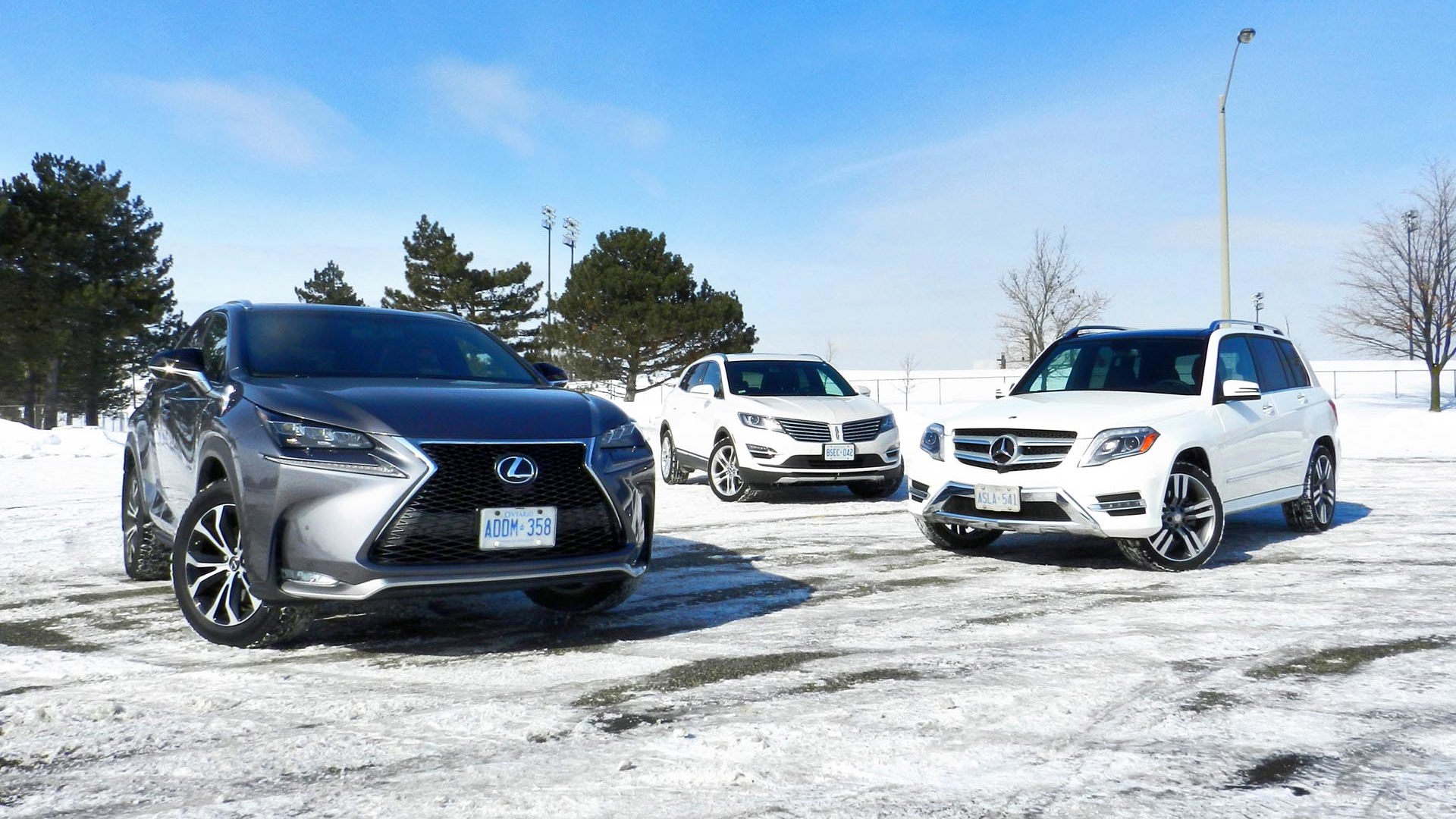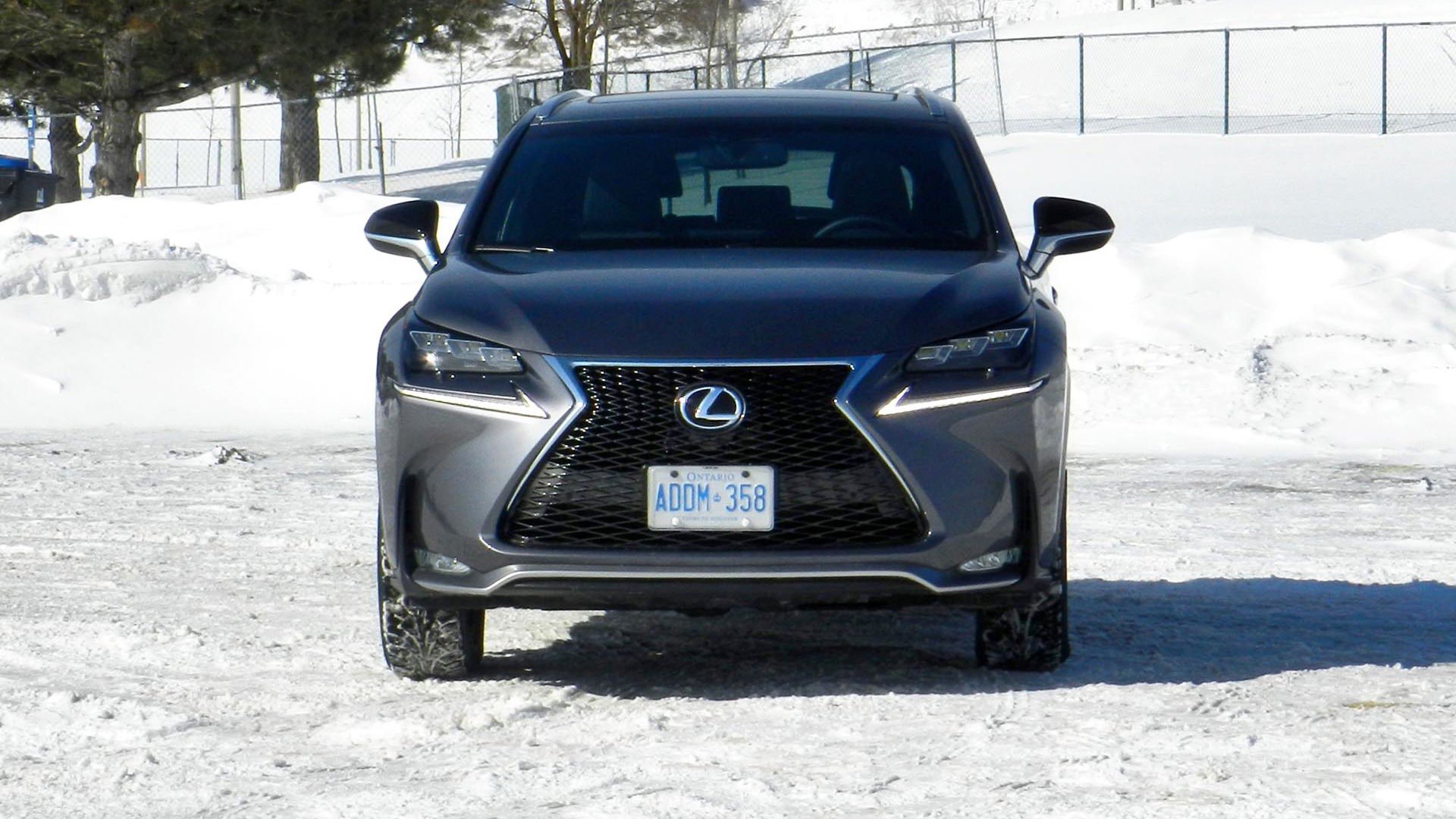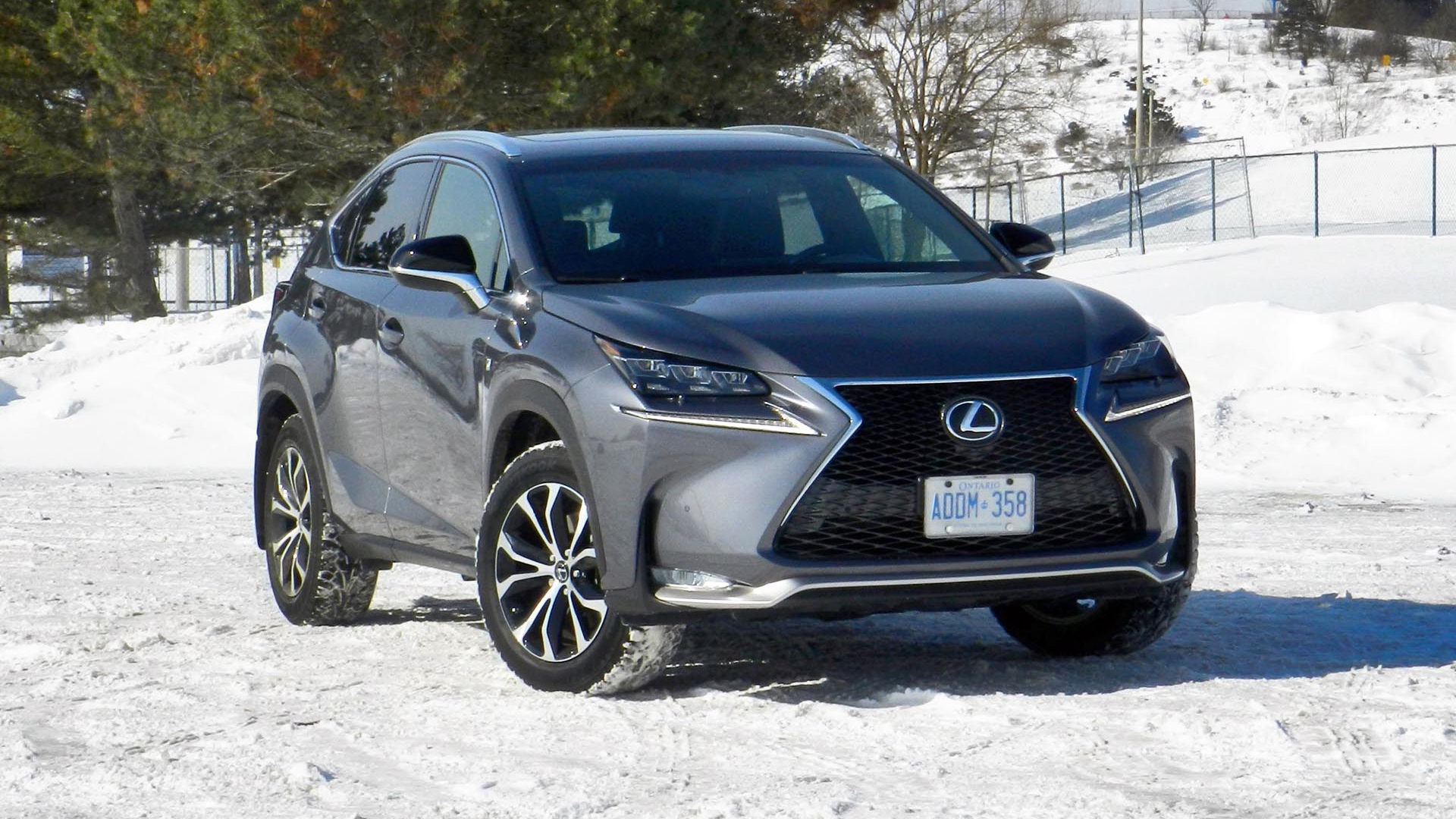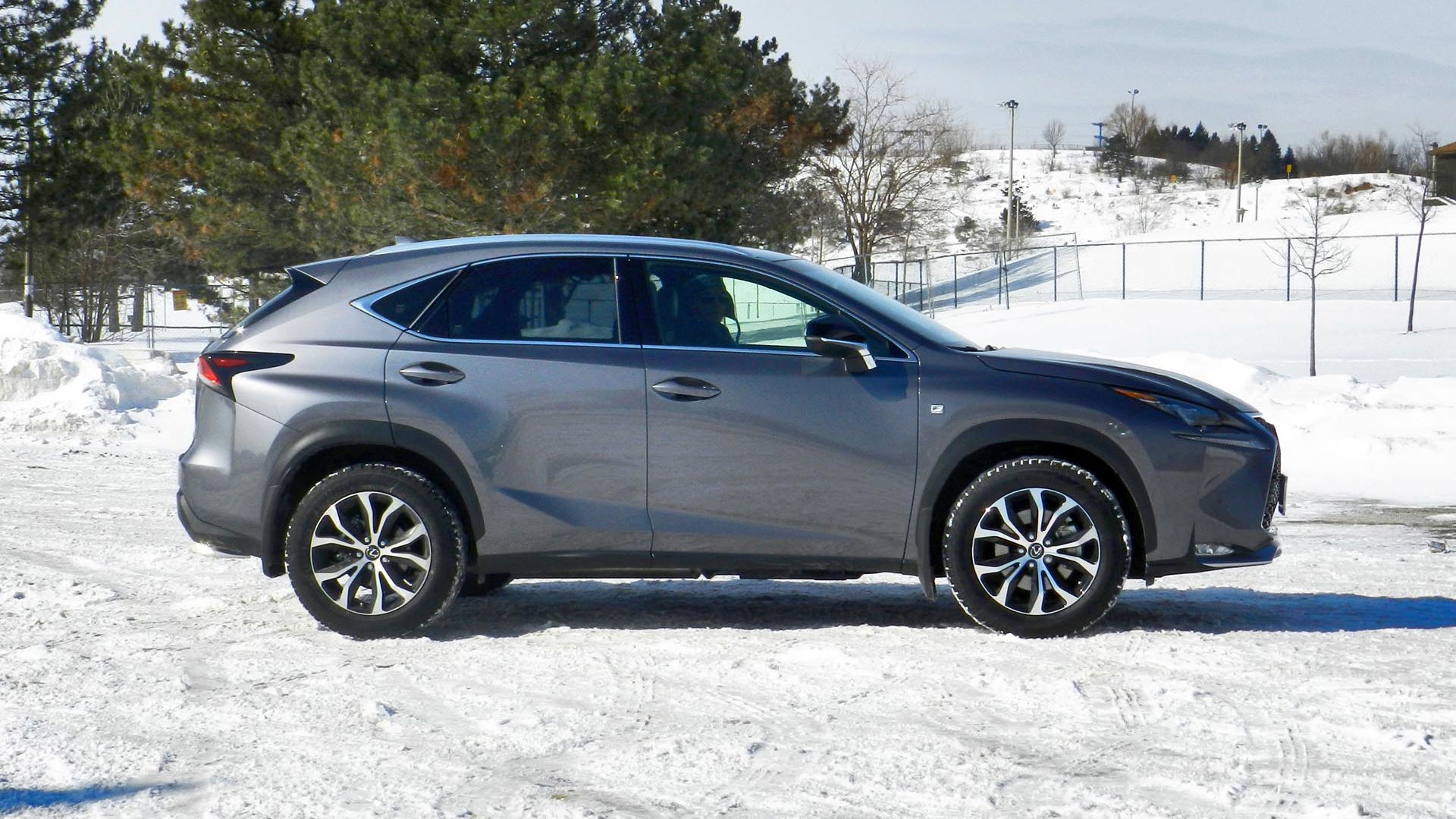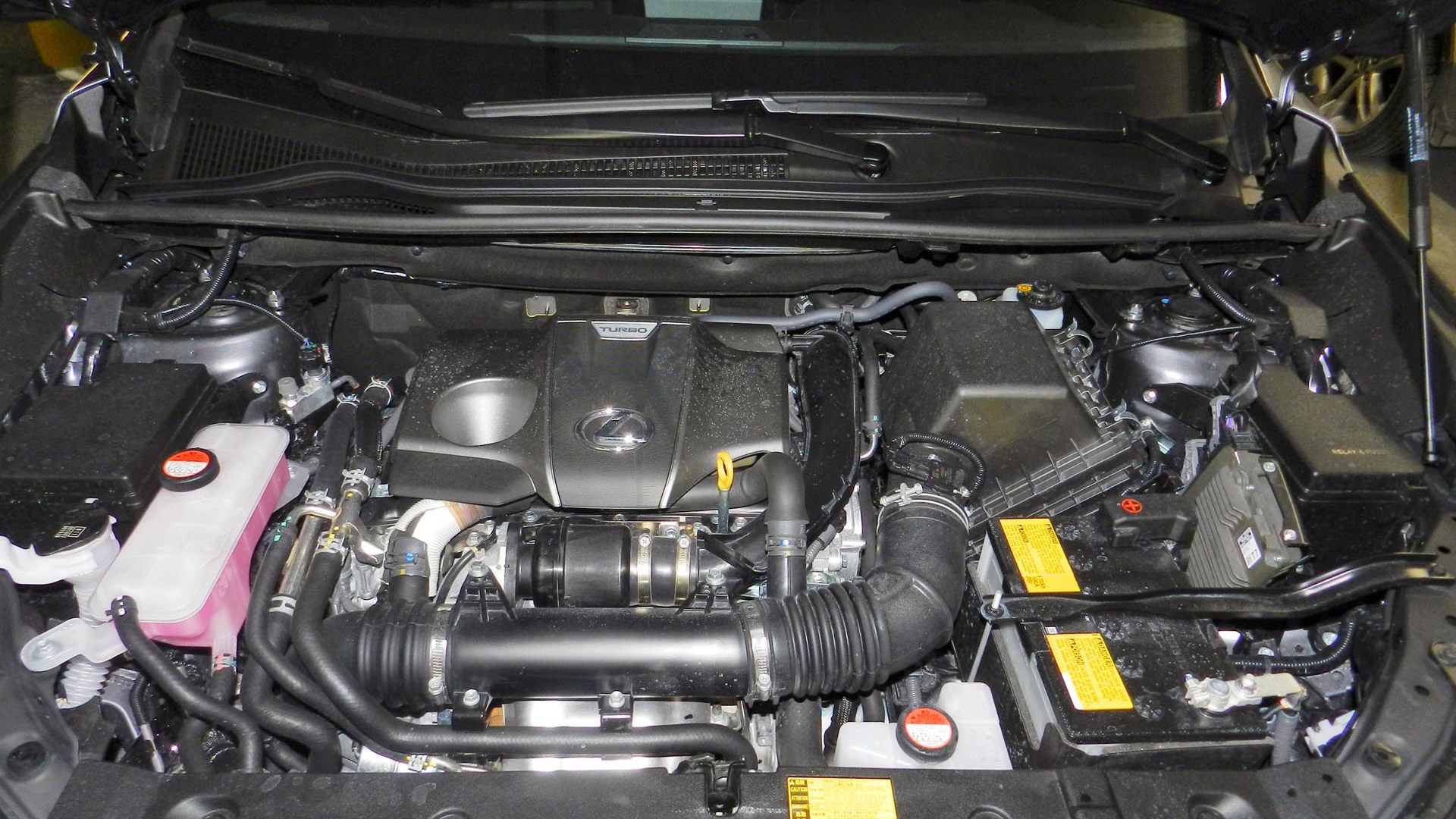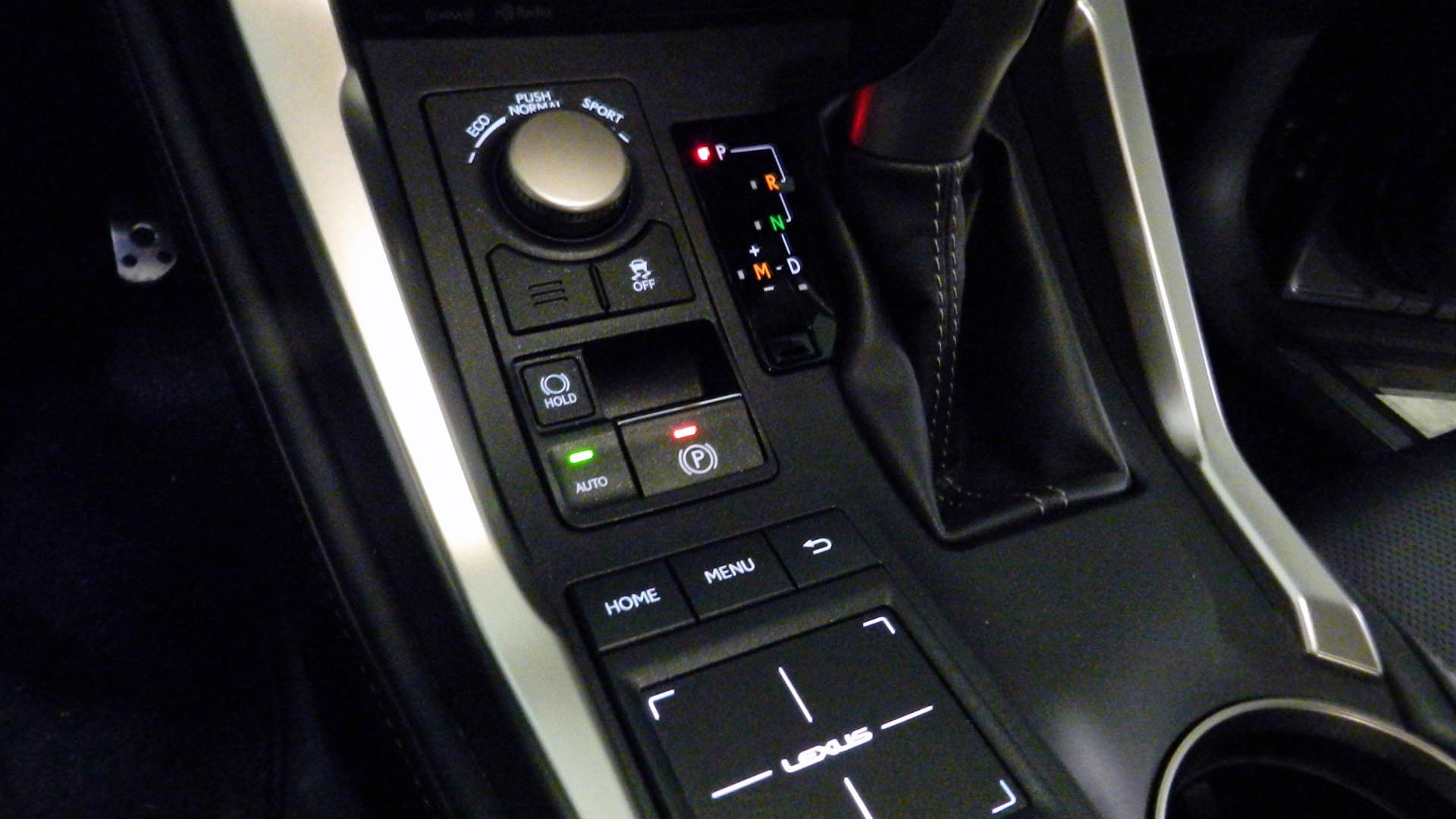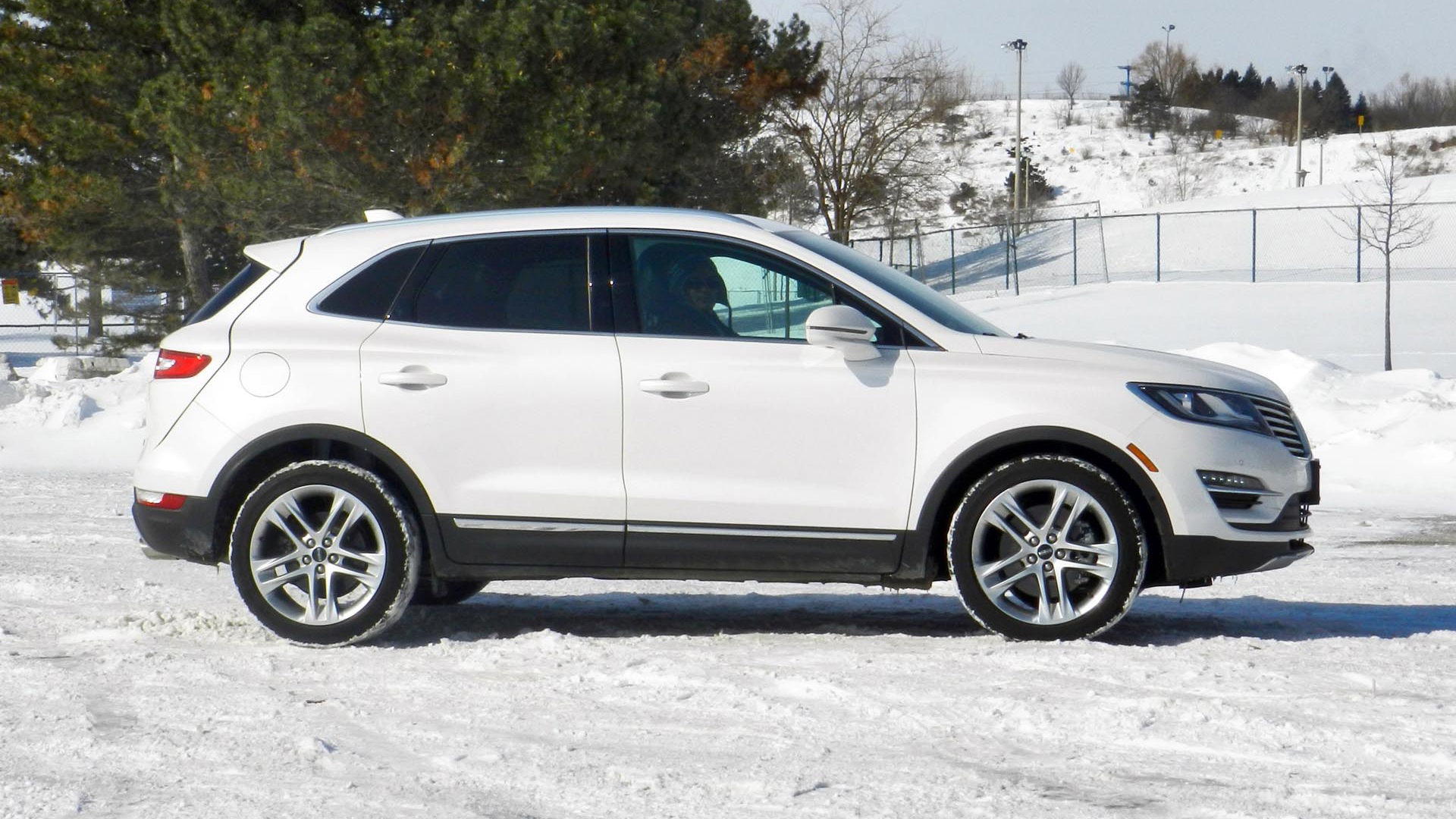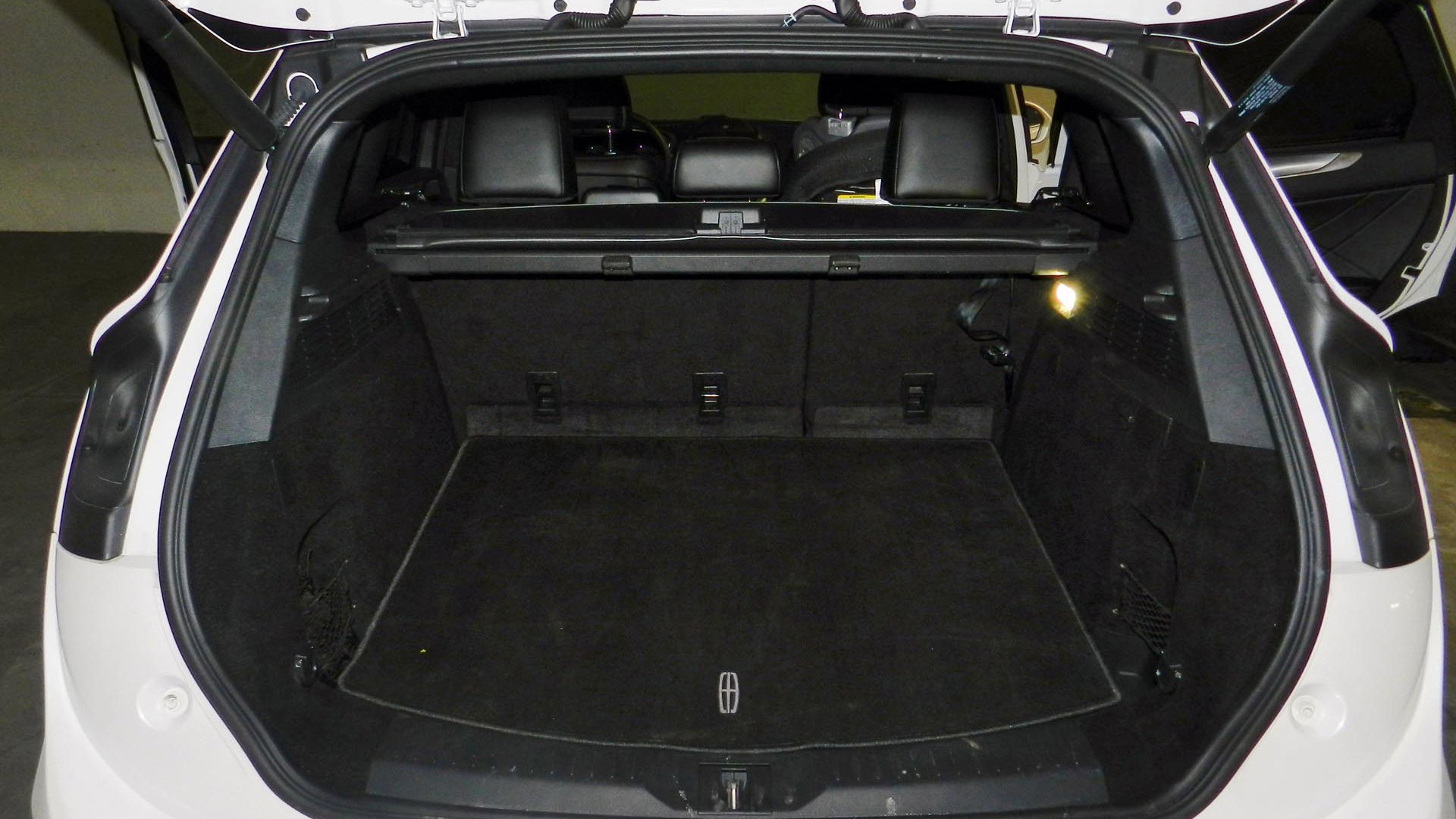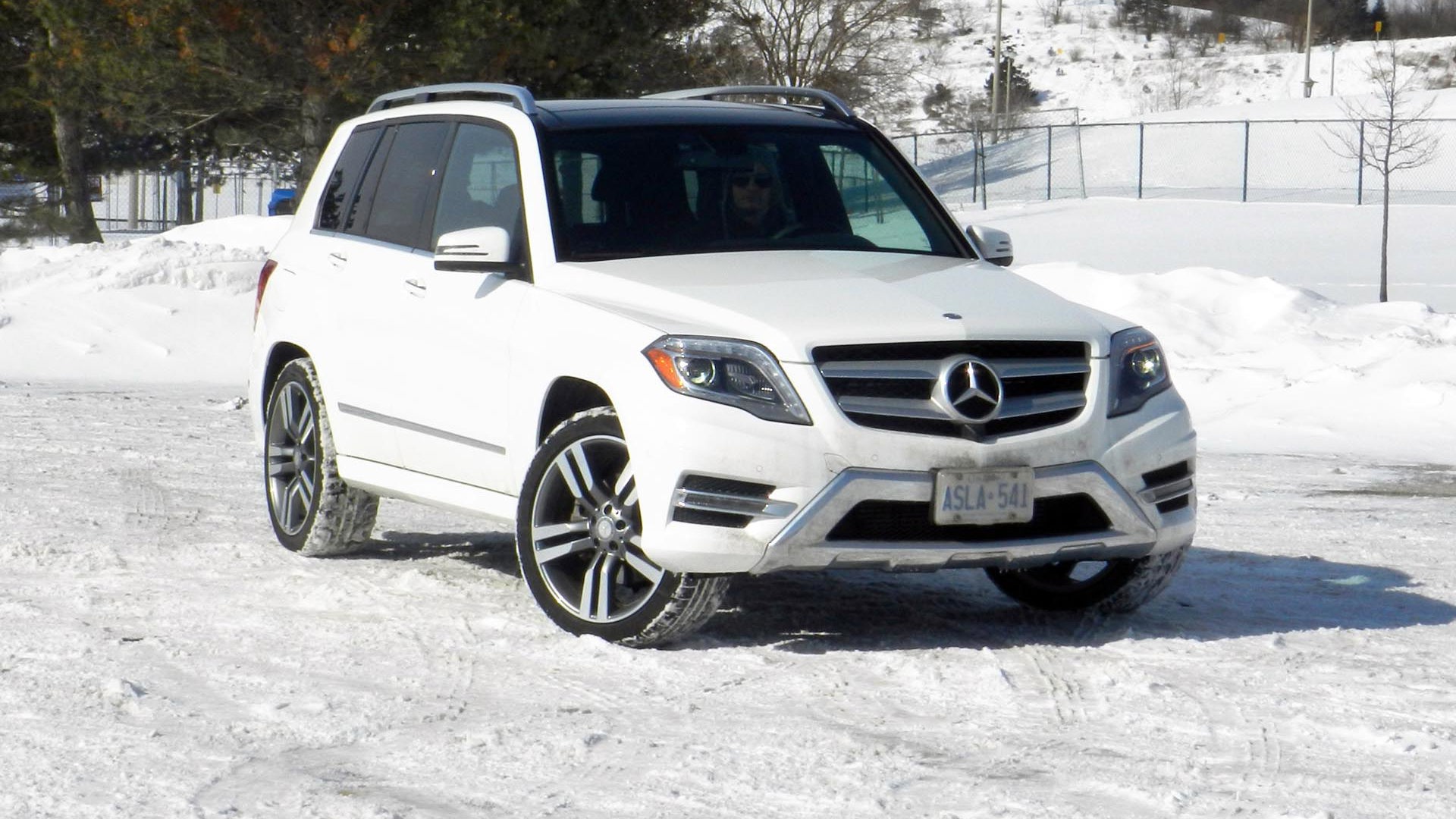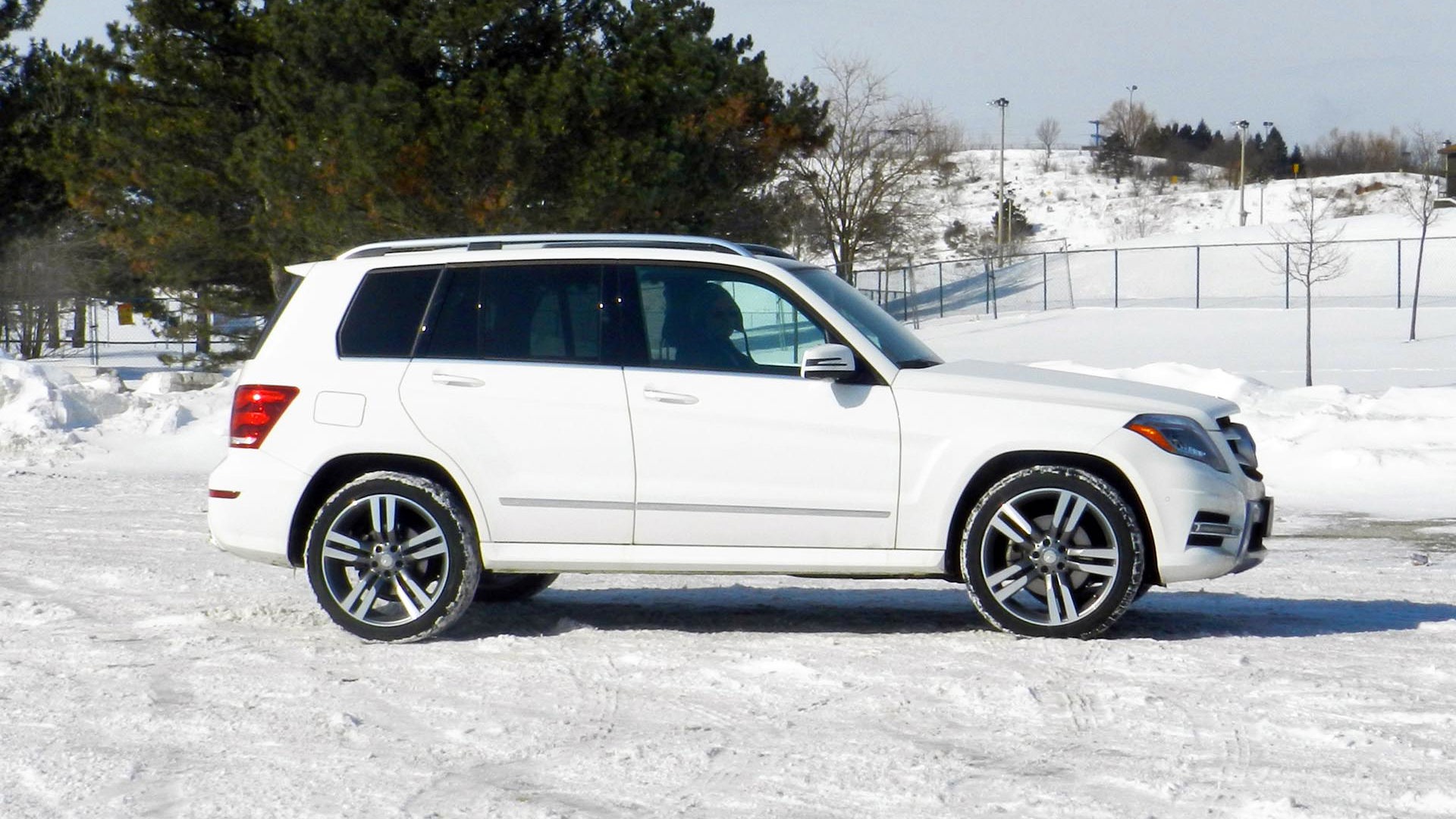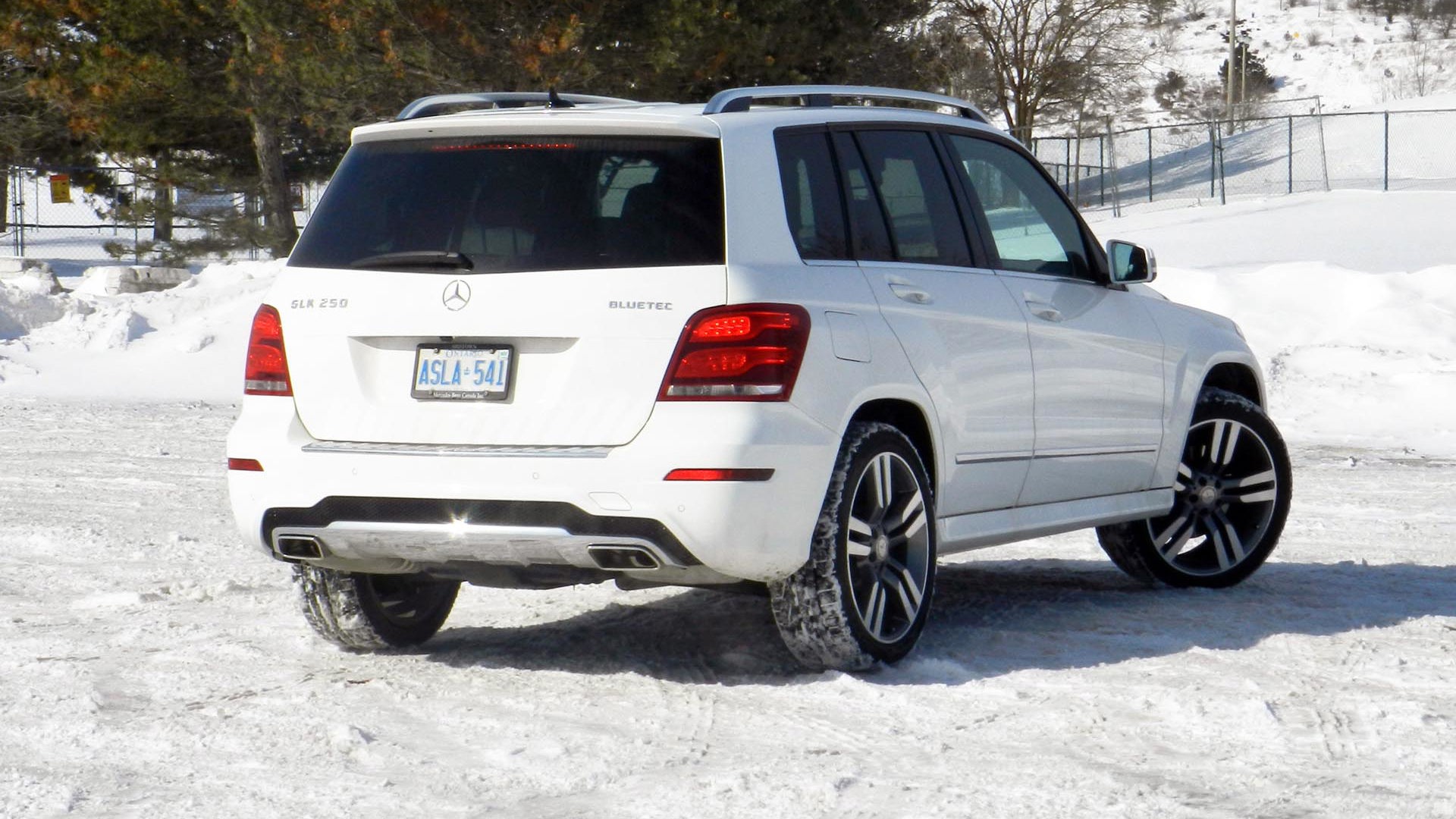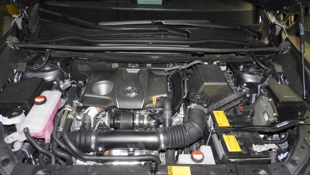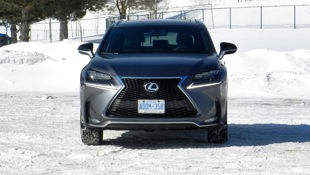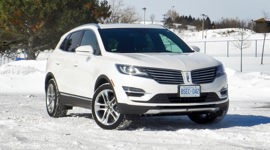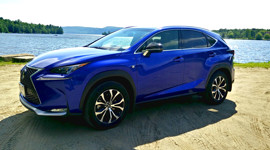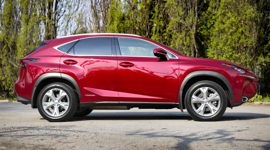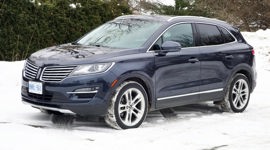Comparison Data
|
Base Price
$40,950
|
$39,940
|
$48,600
|
|---|---|---|
|
Optional Equipment
$9,400 (F Sport Series 1: paddle shifters, sport-tuned suspension, 10 speakers, blind spot monitoring system, rear cross-traffic alert, sport seats, clearance and back-up sensors, voice-activated navigation system, G meter, rain-sensing wipers, aluminum pedals, LED headlamps and fog lamps, ventilated front seats, auto-dimming side view mirrors, auto leveling system, F-Sport front grille, 18-inch alloy wheels, badging, scuff plates, shift knob)
|
$14,130 (Ecoboost Package $1,950; Technology Package: Active Park Assist, Adaptive cruise with forward collision warning, lane keeping assistance – $2,250; White platinum metallic tri-coat – $600; Equipment Group 102A: power autofold heated mirrors, Panoramic sunroof, Navigation, Hands-free liftgate, BLIS w/cross-traffic alert, heated and cooled front seats, auto climate control, heated steering wheel – $7,760; THX Audio system – $995; Class II trailer tow package – $500)
|
$4,200 (Sport Package: AMG Styling Package, 20-inch five-spoke wheels – $1,100; Avantgarde Plus Edition: 115V power socket, power adjustable passenger seat, memory package w/power steering column, heated steering wheel, SIRIUS Satellite Radio, Parktronic w/active parking assistance, power lumbar support, 360° parking camera, ambient lighting, proximity keyless entry and start – $3,100)
|
|
A/C Tax
$100
|
$100
|
$100
|
|
Destination Fee
$1,995
|
$1,750
|
$2,075
|
|
Price as Tested
$52,445
|
$55,920
|
$54,975
|
Jacob Black, Lesley Wimbush, Jonathan Yarkony
This size of vehicle and class is not only the most rapidly expanding in terms of products, but it’s one of the big drivers behind 2014’s booming sales.
Photos by Jonathan Yarkony
Introduction, Jacob Black
These three luxury SUVs (CUVS? Compact? Small-medium SUVs? Extra-medium SUVs?) are all demonstrations of the constant refinement and diversification of model lineups in a quest for market share.
That’s why the Lexus NX is such an interesting proposition. A little smaller than the very popular RX, the NX backfills the size void left by that car’s inevitable expansion. Likewise the Mercedes-Benz GLK sits on the cusp of a size segment that is occupied by that other Mercedes-Benz SUV, the ML-Class, and a properly compact GLA serving entry level crossover needs for the brand. And then there’s Lincoln. The MKC isn’t quite as close to its MKX sibling, but it sure seems spacious for what we’ve gotten used to from ‘compact’ crossovers.
We’ve run into trouble defining caches of raised, unibody wagon/sedans in the past – our comparison test of the Volvo V60 Polestar, Mercedes-Benz GLA 45 AMG and Porsche Macan a notable example. We also had a spot of bother demarcating the classes in our most recent Luxury SUV shootout when we put the MKC up against the Land Rover Range Rover Evoque and the BMW X4.
Phew, that’s a lot of comparisons! And with good reason. This size of vehicle and class is not only the most rapidly expanding in terms of products, but it’s one of the big drivers behind 2014’s booming sales.
Automakers have cottoned on fast, hence the launch of the MKC and the NX to take on the GLK and segment veterans like the BMW X3, Acura RDX, Volvo XC60 and sales leader Audi Q5. This trio is similarly priced, coming out around $55K each. There are other luxury options in this class – like the champion from our 2013 Luxury Crossover Comparison Test, the Audi Q5, and my muddy-road nemesis, the Volvo XC60 – but despite our best efforts we couldn’t get them for this comparison test. They simply weren’t available anywhere near our price window.
With the Q5 a Did Not Start it was up to Mercedes-Benz to take up the fight on behalf of the old guard with its GLK 250 Bluetec.
Is the all-new Lexus NX from Japan capable of wresting the luxury SUV crown from the Germans? Or will a plucky challenger from domestic ranks, the MKC, redefine the game?
3rd Place: 2015 Lincoln MKC 2.3 Ecoboost AWD, Lesley Wimbush
If you're in the target demographic for this vehicle, chances are, you'll remember this little Sesame Street ditty:
"One of these things is not like the others,
One of these things just doesn't belong,
Can you tell which thing is not like the others
By the time I finish my song*?"
*(or in this case, review)
While all three of our comparison vehicles are in the luxury utility vehicle category, and all fall within a couple of thousand dollars of each other, price-wise, they're drastically different in character.
The Lincoln is a bit of an odd duck – an image that hasn't been helped any by the recent creepy-existentialist Matthew McConaughey commercials. I just can't help wondering where whatever the heck that is he's rolling between thumb and finger ends up, and if potential buyers are subliminally turned off by the thoughts of sitting on that sticky little freeloader.
Then there's that face. We were first introduced to Lincoln's new "spread-eagle" grille (there's a little more subtle discomfort for you) just prior to its debut at the 2012 New York Auto Show, by a conceptual artist who painted its likeness in sand. While it looks rather awkward and pasted-on in the Lincoln sedan lineup, on the MKC it's a much more cohesive look, tied together by the strong forward hood creases and flanking HID headlights. Behind the wings are active grille shutters that improve the MKC's aerodynamic profile and help reduce fuel consumption. But its best look is from behind, the wraparound liftgate, raked roofline and beautifully rendered taillights spanning the width of its rump, all coming together rather elegantly.
Still, the MKC scored at the bottom of our trio for overall exterior styling, just barely behind the Mercedes-Benz GLK, with the Lexus NX200t easily in first.
Inside, the MKC boasts Fine Scottish Leather (whatever that is, perhaps it comes from Highland cows) on large and comfortable seats, and scored high for its clean and modern dash and instrument layout. However, the push-button transmission is a bit contrived, the overall "feel" isn't quite as luxurious as the other two, and again earned the MKC the bottom spot for overall interior styling, ergonomics and quality.
However, the MKC earned back some points in features, amenities and content. High-tech features include MyLincoln Touch with navigation, lane-keeping assist, driver alert, blind-spot detection, cross-traffic alert, adaptive cruise control, a slick active park assist that helps while parallel parking and tailgate that opens when the keyholder's foot is waved beneath the rear bumper. It also scored highest of the bunch for cabin storage, and for its excellent sound system. If you don’t get familiar with the self-parking system, you may find it challenging to park, as it scored lowest in this group for ease of parking when we were managing that task.
We all liked the power of the new 2.3L Ecoboost turbocharged four-cylinder, with its 285 hp and 305 lb-ft of torque, but the transmission does spend a bit of time hunting for gears. The MKC comes with Normal, Comfort and Sport drive modes, but the throttle response is a bit abrupt in Sport and the engine becomes a bit louder than what you'd expect in a luxury vehicle.
The powertrain scored top marks of the three, but the MKC again brought up the rear for comfort, agility and driving enjoyment and had the worst observed fuel economy of the group.
It also scored last in cachet – a quality that may be intangible, but is nonetheless one of the most important when you're talking about luxury and a younger generation buying into the brand.
The MKC is an important vehicle for a nameplate struggling to stay relevant in an industry that waits for no one. It's a decent vehicle in its own right, but going head-to-head with Mercedes-Benz at this stage of the game seems just a little above its pay grade.
Not to mention that the MKC, at $55,920, was the most expensive vehicle in our group.
"Did you guess which thing was not like the others?
Did you guess which thing just doesn't belong?
If you guessed this one is not like the others,
Then you're absolutely…right!"
Observed fuel consumption: 14.4 L/100 km
EPA Fuel Consumption: 13.1/9.0/11.2 L/100 km city/highway/combined
| 2015 Lincoln MKC AWD Warranty: 4 years/80,000 km; 6 years/110,000 km powertrain; 5 years/unlimited distance corrosion perforation; 6 years/110,000 km 24-hour roadside assistance |
2nd Place: 2015 Lexus NX200t
The Lexus NX was the reason for this comparison. A brand new vehicle from Lexus in a segment that sprouted under the mid-size luxury SUV field that Lexus dominates with its cushy RX. But this is not your grampa’s cushy Lexus SUV.
In a reversal of roles, Lexus is the one late to this crossover segment, so Lexus is trying to make up for lost time with an eye-catching look. This tidy little SUV is glaringly modern and aggressive in its design, aiming for a big impact in the growing small SUV market. It worked on us, and we found it the best looking of the bunch inside and out, with leading fit and finish.
The attractive design does not come at the expense of usability, and we found Lexus’s new touchpad easy to adapt to, with a logical screen layout and menu options, made even easier with manual volume and tuning knobs (with good sound quality from the upgraded stereo) plus buttons for heating and ventilation. An analogue clock below the highly visible screen matches well with the industrial chic of satin faux metallic trim. However, both the exterior and interior are fairly novel and daring designs, so we can imagine this turning off some Lexus traditionalists, but our money is on this quality and look attracting new customers to the brand.
While the angular look gave the impression of a smaller vehicle, its 500 L of cargo space tops the boxy GLK’s 450 and impressed us with its accommodating layout that better handled our test object – the space behind the wheel wells allows longer objects to fit in the full width, while the larger MKC (714 L) is boxed off in a narrower, yet regular square area.
However, when it came to seating, only the driver’s seat was appreciated more than the others, with supportive contours and mild bolsters that wrap you in comfort and either heating or ventilation. Unfortunately, despite the comfortable seating position, visibility was poorest of the bunch, so parking relied heavily on the back-up camera and sensors, resulting in middling scores there.
The steering wheel also offers a good range of adjustment and feels good in both shape and materials, the perforated leather on the hand grips particularly inviting. Rear seats are somewhat flat, with short bottom cushions, and the GLK proved easier to access for child seat installation.
With 235 hp and 258 lb-ft of torque from a 2.0L turbo, there is more than enough oomph to get this 1,837 kg trucklet moving smartly, but the big torque of the GLK’s little diesel and the MKC’s bigger boosted engine both eclipsed the NX in powertrain chops. That being said, the NX is an easy car to drive, and except for visibility, was comfortable and competent in many driving qualities, with a smooth, refined ride, good handling for this type of vehicle and surprisingly good steering and braking feel and overall responsiveness making this one the most pleasant to drive. The GLK, while fractionally more athletic, gave up points on comfort, so the NX seemed the best fit as far as driving profile for this segment.
On the efficiency front, the NX couldn’t come close to the GLK diesel’s thriftiness, but it should deliver economical driving in most conditions. We tested it on a cold, snowy day on winter tires, so the 12.9 L/100 we observed on test day with our aggressive testing regimen and city-centric driving route is a plausible worst-case scenario, far off its EPA 9.8 combined rating. It makes the GLK’s 9.1 L/100 km all the more astounding.
On the subject of value, we found that the Lexus’s features (less than the MKC, but more than the GLK) were more than generous for its lowest cost of entry of our three testers, and the price fair for the overall quality, execution of the vehicle and cachet of the brand.
If it sounds like a winner, well, it is. Lexus has delivered all of the essential qualities customers are looking for in this segment with a stylish, moderately practical, efficient and easy-to-drive companion for a couple or small family. However, in almost every area that the NX excelled, the GLK was right there with it, and trumped it in a few key areas. Plus, styling and cachet being such significant factors for many considering a luxury small utility, the NX’s polarizing design will either conquest new shoppers or repel Lexus traditionalists without even factoring whether its German competitors are superior or not.
Observed fuel consumption: 12.9 L/100 km
EPA Fuel Consumption: 10.7/8.7/9.8 L/100 km city/highway/combined
| 2015 Lexus NX200t Warranty: 4 years/80,000 km; 6 years/110,000 km powertrain; 6 years/unlimited distance corrosion perforation; 4 years/unlimited distance 24-hour roadside assistance |
1st Place: 2015 Mercedes-Benz GLK 250 Bluetec Diesel
Germany has been in this luxury car game for a fair while, to put it mildly. Mercedes-Benz has had a lot of success with its ML-Class of rigs, all of which put Mercedes-Benz refinement into family and winter-friendly SUV form, now brought to you in smaller form in the GLK.
The GLK has been around in North America since 2010, and the most recent proper update came in 2012, so it’s nearing the end of its product cycle – yet has still managed to hold off these brand-new challengers, and was deemed by Jeff Wilson superior to Germany’s other four-cylinder diesel, the X3 28d.
In this trim, the little diesel engine helps provide refinement (yes, really) as well as effortless driving. The chassis is agile for its size and nimble and the interior is well laid out.
Additionally, the more traditional “boxy” shape of the GLK and low floor saw it rack up big points for ease of entry, rear-seat comfort and child-seat installation. The large greenhouse saw it gain ground for visibility and parking and helped it win “Ease of Driving” by a comfortable margin.
The 200-hp and 369 lb-ft four-cylinder diesel isn’t the hot-rod the MKC’s turbo gas engine is, but it gives convincing acceleration and never feels strained. Rolling into the throttle to merge on the freeway is when the Mercedes-Benz most demonstrated its quiet, comfortable refinement to me – making short work of frantic merges onto Toronto’s cluttered highways.
The engine scored big again when it came time to compare fuel economy readings. On both EPA and our observed numbers the GLK is sipping tiny espressos while the other two chug Grande and Venti Lattes.
When it’s time to change gears, the GLK does it the same way a waiter at a five-star restaurant fills your wine glass – without you ever knowing. The seven-speed transmission seems to always be in the right gear and feels beautifully matched to the torquey diesel. The gearbox is a brilliantly invisible supporting actor in a high quality powertrain cast, silently giving the GLK an edge over the sporty and high-strung turbo in the Lexus.
Ride quality would do well to take lessons from the transmission. The suspension wasn’t as compliant or as forgiving as the Lexus’s nor as quiet and peaceful. The Mercedes-Benz let more of the suspension noise as well as more of its movements into the cabin – something we’re sure will be addressed in the next iteration.
Equally surprising, the Mercedes-Benz was eclipsed by the NX in quality, fit and finish. The GLK gauges and dash were also the least popular of the trio. The Merc was last on features, amenities and content, with Ford and Lexus both throwing a bucket of driver aids, interior gadgets and knick-knacks at their version of luxury. The GLK was missing adaptive cruise control, for example, as well as lane-keep assist.
The awkward positioning of the three steering column stalks for transmission, cruise control and indicators made us rage – especially when I accidentally selected “neutral” while trying to signal “left” – but the rest of the cabin is smartly set up and cleanly laid out.
The dearth of features and ergonomic foibles hampered the Merc’s score for value, but the Germans have one more trick up their sleeve – brand cachet. That three-pointed star up front gives the GLK curb appeal and status worthy of any reality-show troupe of housewives.
There’s also a sense that when the GLK won a category, it won by a lot, but when it lost, it was a hair’s breadth away from the win. Consistency across the board is important in any game, and it’s no different in an autoTRADER comparison test!
In all, it was the GLK’s nod to practicality and its impressive diesel powertrain, coupled with a few decades of brand-building that gave it the win over the Lincoln MKC and the Lexus NX. While the NX is more enjoyable to drive, the GLK is the more enjoyable car to live with day in, day out – especially come fill-up time.
This though, was a narrow victory. The sort that sounds like a warning shot over for any long-term champion. The Germans are still on top, for now. But the others are coming.
Observed fuel consumption: 9.1 L/100 km
EPA Fuel Consumption: 9.8/7.1/8.4 L/100 km city/highway/combined
| 2015 Mercedes-Benz GLK 250 Bluetec Diesel Warranty: 4 years/80,000 km; 4 years/80,000 km powertrain; 5 years/unlimited distance corrosion perforation; 4 years/unlimited distance 24-hour roadside assistance |


